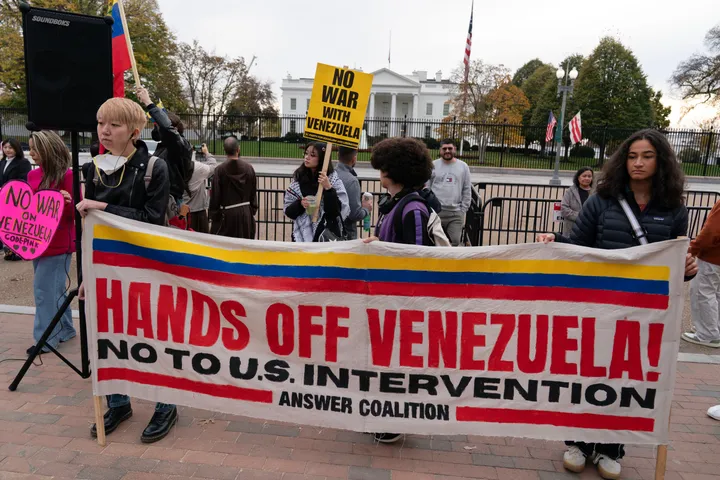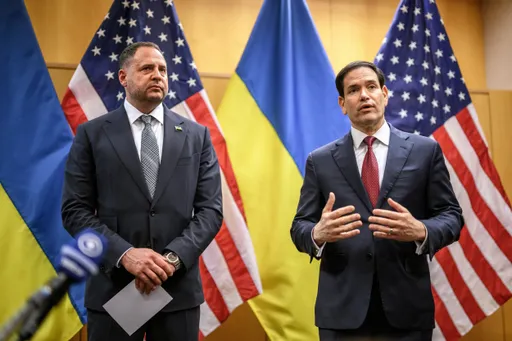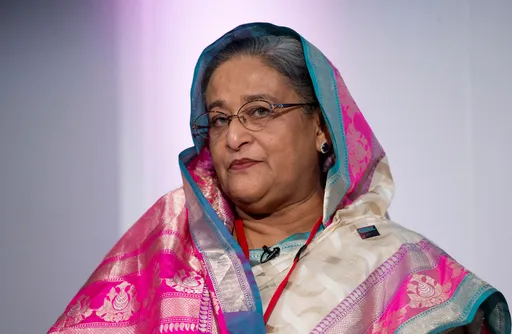As President-elect Donald Trump gets ready for his second term at the White House, he is using every opportunity to signal what will be on top of his foreign policy agenda for the next four years: containing China to “make America great again”.
If his rhetoric is any guide to what might follow in the arena of foreign affairs, then it won’t be a far-fetched assessment to assume that we might be entering an era of Cold War 2.0. But should the US really be wary of China’s economic and diplomatic clout?
The answer to this differs among experts on international relations. Some feel that Trump is not driven by any ideological interests and is focused on the bottom line of the equation. China is not too eager to export its Communist ideology either and is more worried about reviving a stalled economy.
However, here’s the big catch. The Chinese government has been tactfully investing and encroaching into the space from where the US government has withdrawn in the past decade.
For anyone who follows regular news, the unmatched dominance of China across the African continent is a simple fact.
Building up Chinese power and influence in Africa took place in the absence of American interest and presence in the continent.
The other international power, Russia, had only military priorities and came to exercise hard power capabilities that have left bitterness in their wake among the people of a few African countries.
China, on the other hand, patiently and carefully built up its presence in several African countries, buying lithium mines and investing in highways. Beijing now dominates other outside powers not only in Africa’s economic sphere but in politics as well.
The dragon’s footprints
Then there’s Central Asia, the other region that no longer figures prominently on the radar of US policymakers and where Russia is viewed less favourably because of its strongarm tactics.
Here, too, China has found a way to make inroads. After the Soviet Union collapsed in 1989, the US was content with Russia withdrawing its military and state institutions from the region.
Washington did little in terms of articulating any long-term strategy to counter the decades-long Russian influence or finding ways to fill the emerging power vacuum.
But China acted. Knowing that Central Asia is at its doorstep, Beijing did not sit on the sidelines.
As China accumulated more and more wealth, thanks to its export-driven economic model, Central Asia, particularly Kazakhstan, was the first place where Beijing flexed its financial muscle and used diplomacy to make inroads.
Other nations, too, gradually came under the Chinese sphere of influence. Besides Kazakhstan, Turkmenistan, Tajikistan, Kyrgyzstan, and Uzbekistan owe loans to China at levels that are hard to believe.
China has even acquired a certain percentage of land in some of these countries, where Chinese nationals are engaged in farming and other economic activities.
In Afghanistan, China was quick to step in and sign up business deals with the Taliban administration. The US military’s chaotic withdrawal from Afghanistan in 2021 and the Taliban takeover of Kabul left the country in a diplomatic limbo.
Even Muslim countries were shy to recognise or ink agreements with the Taliban, which continues to face Western sanctions. The Chinese didn’t let those concerns come in the way.
A cursory comparison between China’s approach to Central Asia and how the US has dealt with its backyard of Latin America speaks volumes about the differences in the policymaking of the world’s two largest economies.
While US policy towards Latin America appears at times to be blatantly arrogant, with its hard power dealing upsetting relations with regional countries, China interacted with Central Asia as a fast-growing neighbour.
China’s overtures neither reeked of Russian imperialism nor were they confined to the quick-lived American aggression.
It knocked on the doors of these countries as a willing investor and, after a while, set itself as a respectful lender that provides funds without the political strings US-backed international financial institutions force on the non-Western countries.
As Chinese investments and money have grown in the region, so has the influence and actual presence of the Chinese state.
This regional politics has only been one aspect of the increasing Chinese power vis-a-vis the US.
China has carefully crafted long-term policies and strategies in areas where it saw the opportunity and from where the Americans or the EU have lacked interest.
Take the example of the electric car market. While Tesla was the first company to popularise the use of EVs, Chinese companies have seized the largest market share, sensing early on the sector's importance and investing in production facilities.
China’s BYD has emerged as the largest EV maker, beating longer-term dominant auto players like Germany’s Volkswagen and America’s Ford.
Playing catch up
After years of American obsession with the Middle East, the State Department changed the direction of US foreign policy priority to the Asia-Pacific, to be more precise, China.
But it took years to manoeuvre the US state apparatus in that direction. Why?
The early 2000s were a golden period as the world economy grew and created economic powerhouses among the developing states, including the BRICS members and Türkiye.
The economic growth of that time brought unseen levels of prosperity and even gave companies in mature economies new markets to sell their products and services. But the fairytale crashed with the stocks and bonds in the 2008 global financial crisis.
In the following years, former US President Barack Obama's administration was too busy fixing the US economy. The Arab Spring and the Syrian civil war didn’t help US officials focus on the real competition coming from China.
And despite the rhetoric of keeping the US interest at the forefront, the US bureaucracy and successive US administrations failed to develop coherent policies to counter Chinese activism in global politics and economy.
There’s another aspect that led the US leaders to drag their feet when it came to taking on the challenge posed by China. And it has to do with semiconductors, AI chips, EVs and other high-tech goods.
The US economy, especially its financial sector, took a hit after the 2008 financial crisis. However, American tech firms continued to dominate the landscape as they gained more customers and entered new markets.
US policymakers were late in comprehending the challenges posed by the Chinese technology sector, which was quickly catching up.
The US response came too late and too slow.
Unlike the superpowers of the 19th century, who would either fight or join forces with each other in a constant race to gain the upper hand, the 21st-century US supremacy was so unchallenged for so long that this comfort misled American policymakers to undermine the rising Chinese competition.
Thanks to its superior position in global politics, the US has not needed to pursue a balancing act through diplomacy for decades. And now, it acts in a clumsy hurry without calculating the long-term consequences of an open fight with China.
The previous US administrations only paid lip service to the shifting focus of global politics to Asia-Pacific.
Trump’s ringing-the-alarm-bell approach to China is not a personal choice. It actually embodies the current mood of the American industry and state against Chinese competition.
As the next US administration gets ready to counter Chinese power blatantly, President Xi Jinping and the Chinese state have maintained a cautious silence.
In the meantime, the grass is not greener in China either. Beijing has to address how to transform its real estate-driven economy to deal with the current economic stalemate and instil hope in the disappointed middle class, which is vital for the country’s growth.
Will China surprise the US and the West this time too? Probably yes, and time will show in what ways.





























